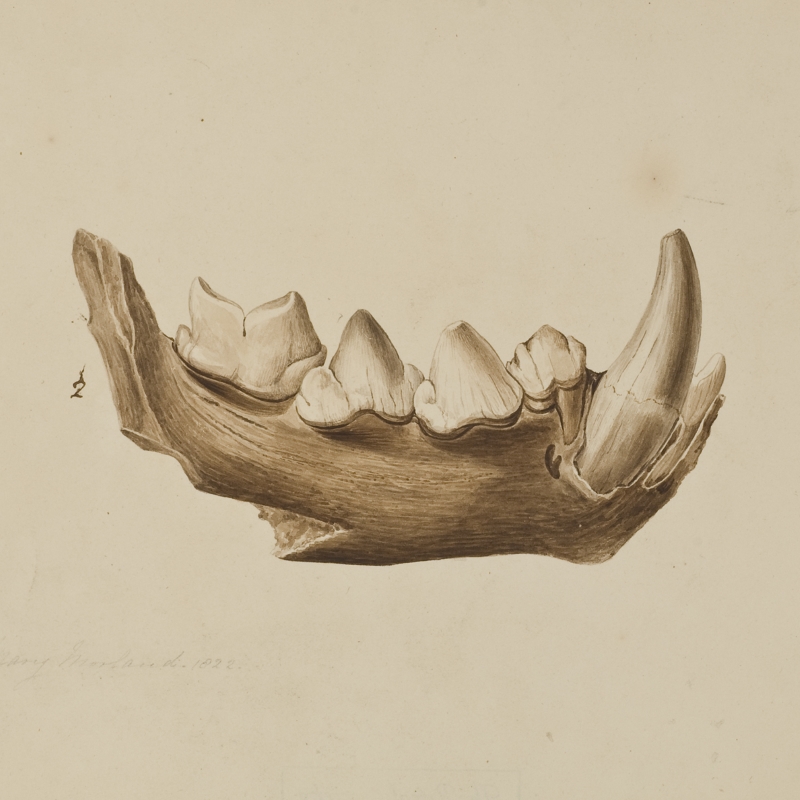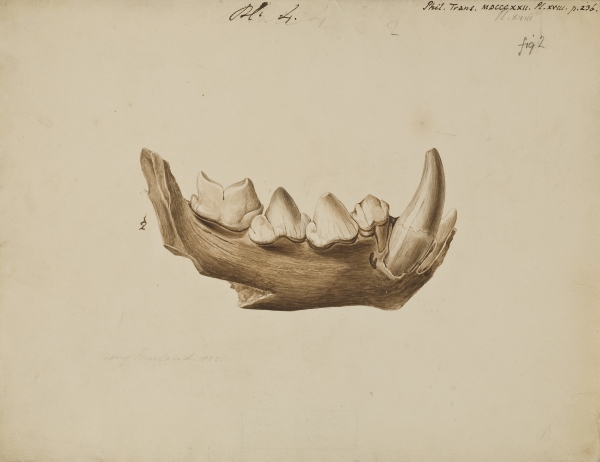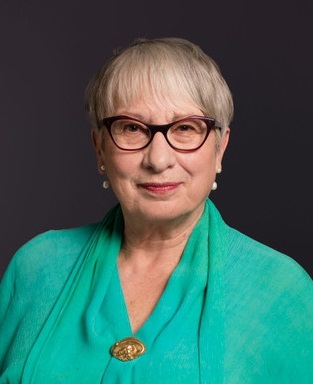Uta Frith continues the story of geologist and fossil illustrator Mary Buckland, née Morland, including her wonderful drawings of hyena jaws.

Continuing the story from part 1…
How did Mary get interested in fossils? She had been born in Abingdon in 1797, as the eldest daughter of a solicitor. She lost her mother very early and was mainly brought up in Oxford by the Regius Professor of Anatomy, Sir Christopher Pegge and his wife, who had no children themselves. She must have been a very likeable, clever child, and no doubt it was easy to instil in her an interest in natural science. In the early 19th century there were in fact a number of role models for amateur women geologists and palaeontologists, the most well known today being Mary Anning (1799-1847).
A lovely anecdote tells that William Buckland, who was Professor of Geology and Mineralogy at Oxford University, first met Mary when they were both travelling in Dorset and sharing a carriage. Both were reading the same just published weighty volume by Cuvier. What an introduction to a long and apparently happy marriage. Almost immediately after their marriage (she was 27 and he was 40 years old) they set out on a carefully planned research trip, which took them all over Europe and lasted a whole year. During this trip they met famous scientists and also visited important locations where fossils had been found.

Painting of a hyena jaw by Mary Morland, 1822 (ref. PT/73/9/17)
There could hardly be a sharper contrast to the domestic scene shown in the previous post than this illustration: the wonderfully executed jaw of a hyena. This is an example of Mary’s work and signed by her very clearly. Why was the jaw of a hyena so important? It was found with many other bones of hyenas and other exotic animals in a cave in Yorkshire and one theory was that they were swept there from far-away places in the Great Flood.
William Buckland was one of the pioneers who proposed that the age of the earth was far older than biblical reckoning and that there was a very long time of life on earth before the flood (ante diluvium). In fact, he proposed that the animals found in the cave of Kirkland had lived there, and for a long time there was a tropical landscape and this was followed by an ice age where glaciers covered the land. This was heady stuff and led to slow reconfiguring, including the age of dinosaurs, the bones of which were turning up in ever greater numbers, and it questioned the real age of mankind, paving the way for Darwin’s theory of evolution. None of this fitted with the earlier framework of thought and this is the reason why geology and palaeontology were such important subjects at the time.
Mary would no doubt have been interested in this paper which includes an illustration of hyena skulls with fierce teeth at different stages of development. A talk by Kay Holekamp on the complex social life of hyenas at a Royal Society Discussion meeting a few years ago left an indelible impression on me. In hyena society the females are always at the top of the hierarchy, the cubs are brought up communally, and their high social intelligence seems to go together with high aggression. What a counterexample to the sometimes cloying image of the gentle, delicate and caring female! I wish Mary, who so meticulously drew their fossil jaws, could have read about the amazing social skills of these fearful creatures. Would Mary, who studied many dangerous looking fossils, including dinosaurs, have been shocked? I doubt it.
Mary did not only do illustrations for her husband’s papers, she also took a hand in writing them, and William Buckland’s prose was much admired. She continued to accompany William on field trips, for instance to the Alps. Another anecdote reports how she helped in an experiment carried out at home: a pet tortoise was made to walk over moistened flour on the kitchen table to compare the traces made with traces found in sandstone. William Buckland’s biographer says: ‘The delight of the scientific couple may be imagined when they found the footmarks were identical’.
Readers may also be interested in Henry James’s fossil notebook, with the charming illustrations of trilobites which he began in 1843 – now online as part of the Centre’s Turning the Pages gallery.

